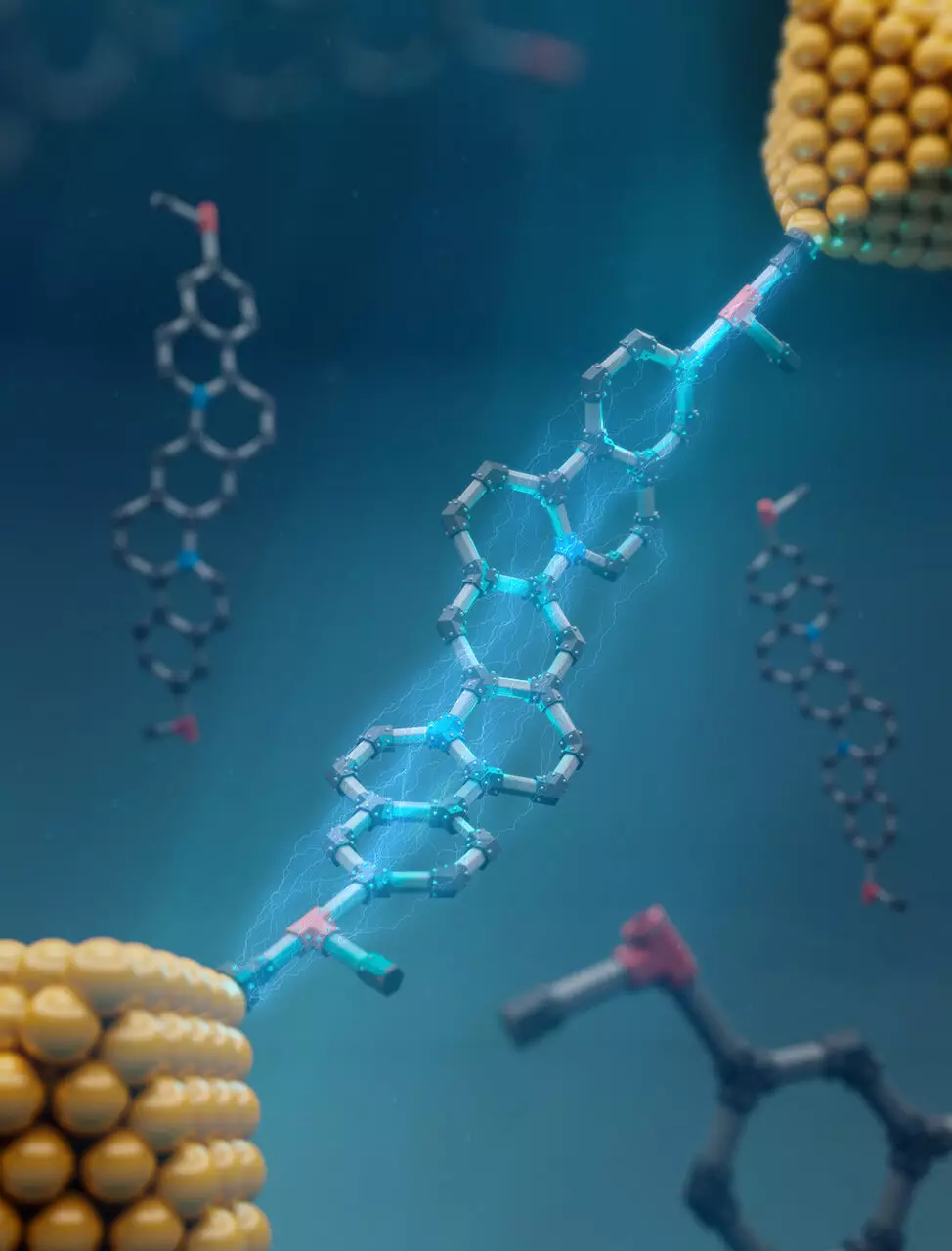As technology progresses, the relentless pursuit of miniaturization in electronics has consistently driven innovation in microchip design. Traditionally, this trend has adhered closely to Moore’s Law, which posits that transistor density on silicon chips doubles approximately every two years. However, as electronic devices shrink, we are reaching the threshold of physical limitations inherent to silicon-based technologies. The industry’s quest for smaller, more powerful components faces obstacles that could stymie further progress in this area. Fortunately, recent research into molecular electronics offers promising alternatives based on the utilization of individual molecules as fundamental components of electronic devices.
Molecular electronics represents a radical shift in the electronic landscape. By leveraging the unique properties of single molecules, researchers can push the boundaries of device miniaturization beyond what conventional silicon-based technologies can offer. A critical factor in this paradigm shift is the precise control of electrical currents flow through these molecules, as the performance of devices depends significantly on their consistent conductivity.
However, this ambitious vision is not without its complications. Molecular components exhibit dynamic behaviors and flexible structures, leading to unpredictability in their electronic properties. In fact, differing molecular configurations can drastically affect electrical conductance, leading to fluctuations that may reach variations of up to 1,000 times. These challenges have raised concerns about the reproducibility and reliability necessary for the commercialization of molecular electronic devices.
A research team at the University of Illinois Urbana-Champaign has recently made strides in this field by developing a novel methodology to control molecular conductance. Led by Charles Schroeder, along with postdoctoral fellow Xiaolin Liu and graduate student Hao Yang, their groundbreaking work focuses on the design and synthesis of ladder-type molecules. These molecules are categorized by their shape-persistent nature, granting rigidity and therefore stability in their electronic properties.
In their approach, the researchers utilized a straightforward one-pot synthesis method to produce these ladder molecules. By employing this innovative technique, the team successfully created a spectrum of chemically varied, charged ladder molecules without the use of expensive starting materials typically seen in traditional synthesis. The flexibility of this one-pot multicomponent strategy allows for greater diversity and adaptability in molecular products, making it a significant advance in the fabrication of molecular electronics.
The utilization of ladder-type molecules is particularly transformative given their structural integrity. These molecules maintain a locked configuration that limits the rotational mobility of their components, leading to minimized variations in electrical conductance. This stability is paramount for achieving consistent performance across billions of electronic components which, ultimately, is essential for the scalability required in commercial applications.
The concept of shape-persistence was further illustrated in the research team’s design of a butterfly-like molecule. This new synthetic pathway yielded a structure that mirrors the beneficial properties of ladder molecules, enhancing the versatility in molecular design aimed at electronic applications.
The implications of this research extend deeply into the future of electronic devices. The ability to create and control rigidly defined molecules with consistent conductance opens new avenues for reliably scaling down electronic components, which could lead to significant advancements in consumer electronics, biomedical devices, and more. According to Yang, overcoming the challenges associated with conductance variation is crucial for the successful commercialization of molecular electronic devices.
Thus, the research conducted by Schroeder and his team at the University of Illinois not only highlights an innovative method for building resilient electronic components but also cultivates optimism for the future of molecular electronics. As they continue to explore the functionalities of shape-persistent molecules, this research holds the potential to unlock further advancements in the field of nanotechnology and electronic component design, making it possible to develop devices that are not only smaller but also more efficient and reliable.
As the field of electronics grapples with inherent limitations tied to traditional silicon chips, molecular electronics emerges as a beacon of hope. Through innovative strategies like the development of shape-persistent ladder-type molecules, researchers are addressing the challenges of conductance variation and establishing a foundation for the future of compact, reliable electronic devices. The journey towards harnessing molecular-level components introduces a transformative era in electronics, one that promises remarkable advancements in technology, efficiency, and functionality.


Leave a Reply